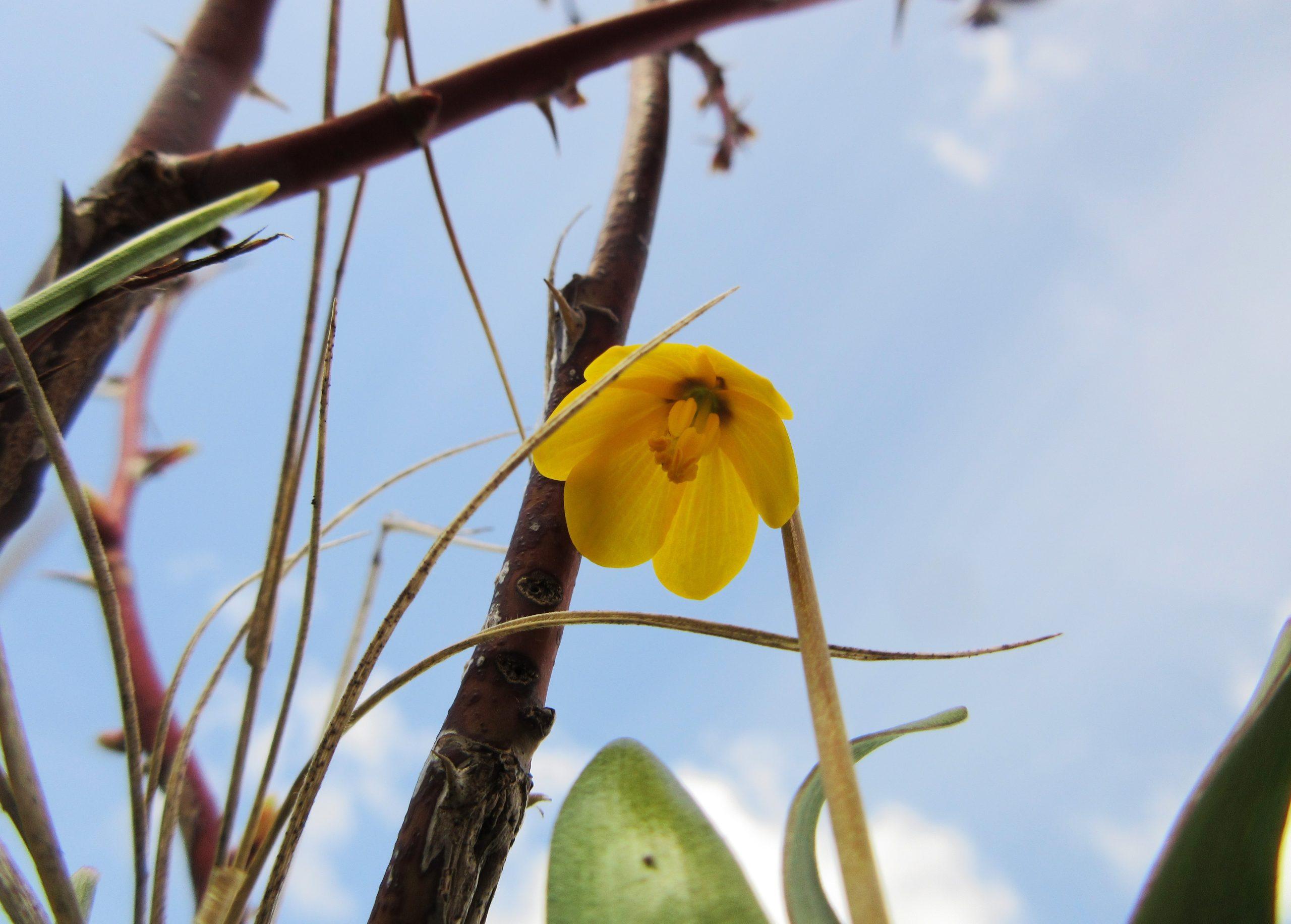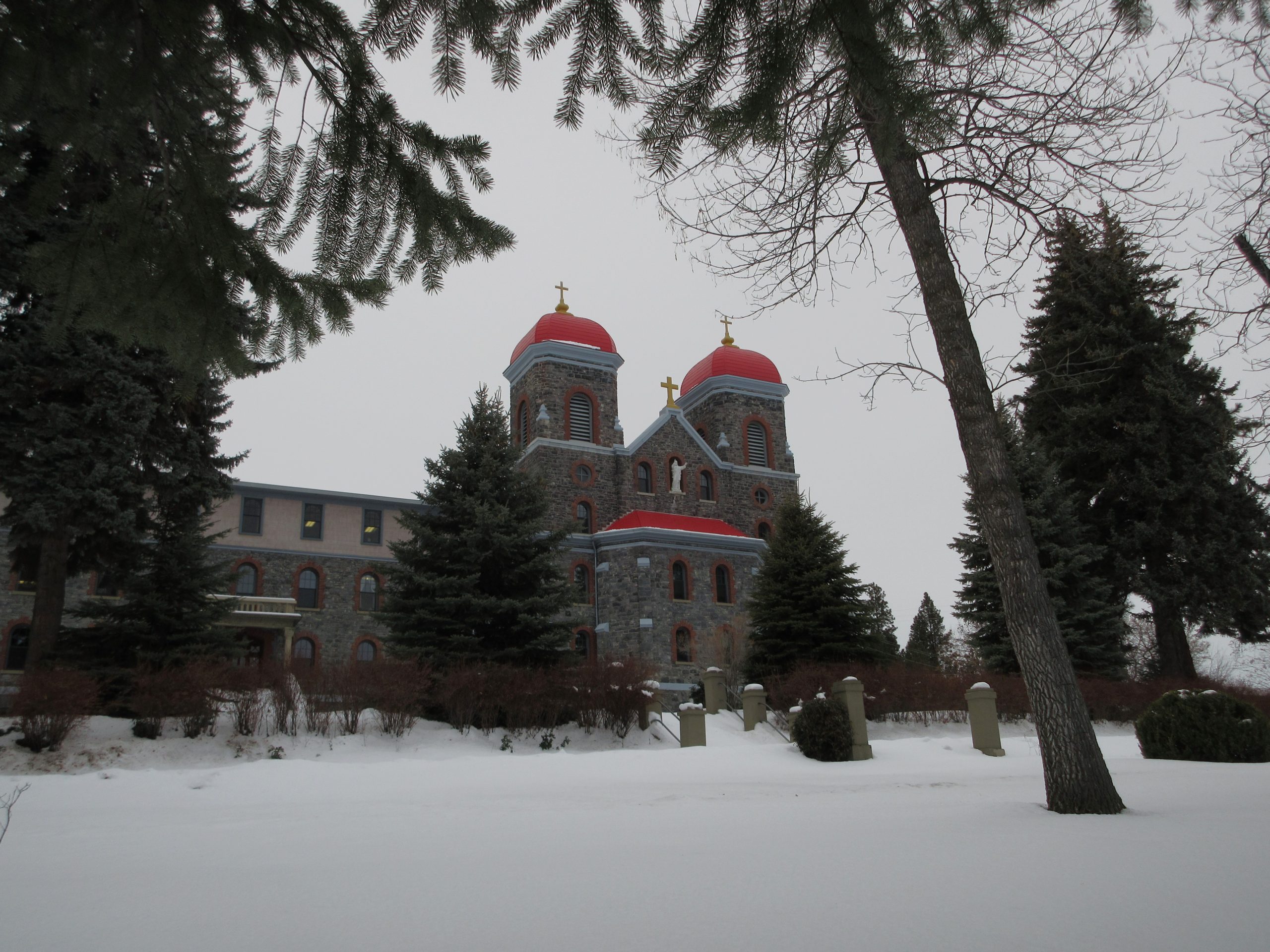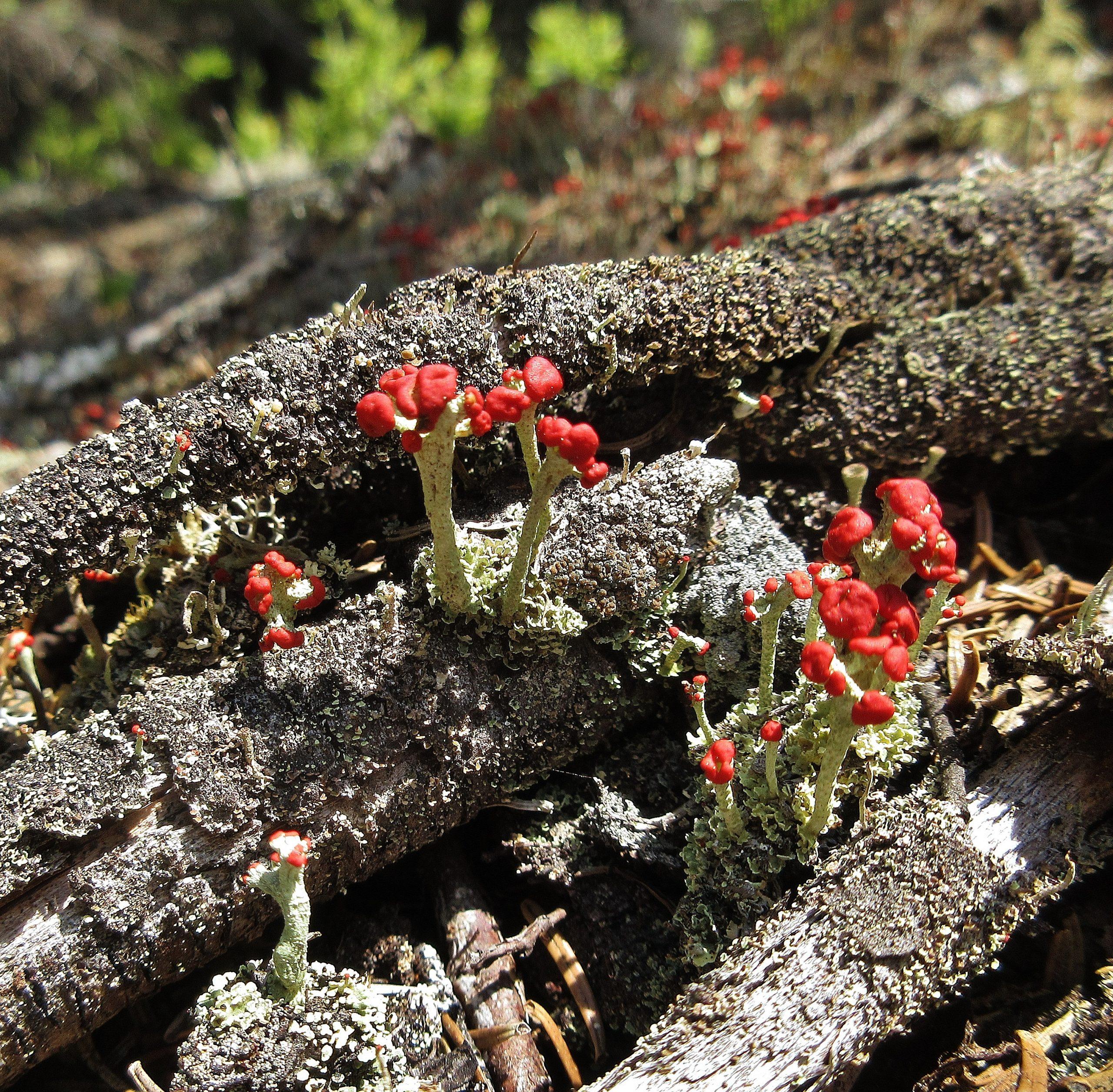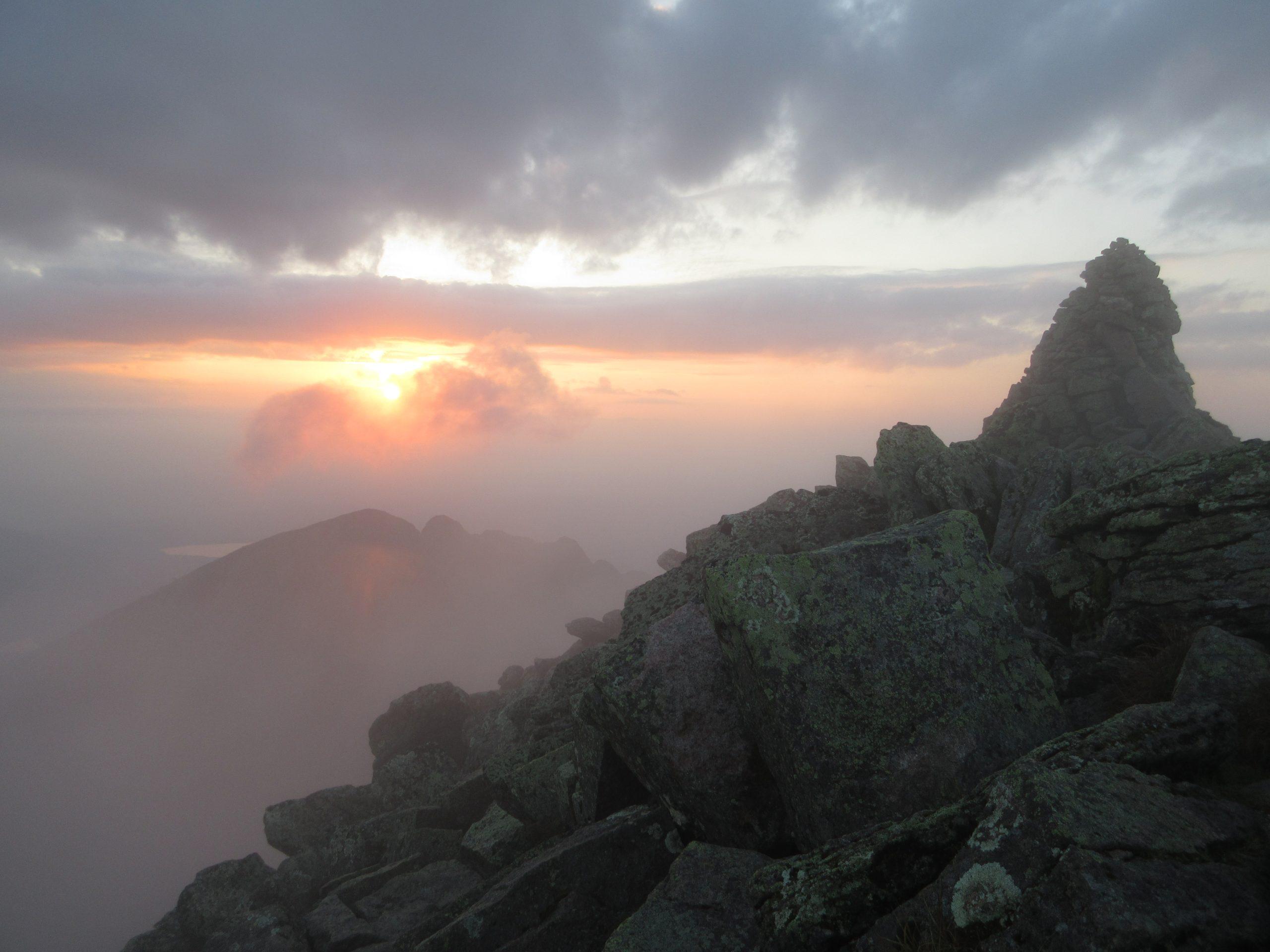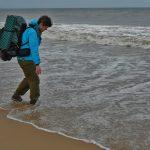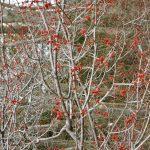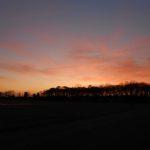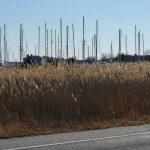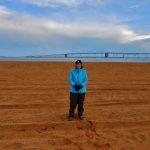On the last day of May and the first of June, I explored a primeval forest in the North Maine Woods: a five-thousand-acre enclave of virgin woodland, the largest contiguous tract of old growth east of the Mississippi. It’s an anachronistic island surrounded by the younger forests typical of Maine today – regenerating woods that have been harvested multiple times over the past four hundred years.
Big Reed Forest Reserve encompasses Big and Little Reed Ponds, just south of Munsungan Lake. The ponds’ outlet stream was too small to transport timber in log drives. And so the trees in their watershed remained uncut, even when neighboring woods fell to the lumberman’s axe. In the mid-nineteen-seventies, the log driving era came to an end. Logging roads were built to carry timber out by truck. But by that time, the Pingree family, owners of the tract, realized just how special this remnant of Maine’s ancient forest was. They approached The Nature Conservancy, whose Maine Chapter purchased the land with the intention of keeping it wild.
Big Reed Reserve is roughly two hours’ drive from the nearest paved road. To get there, I turned onto a narrow, unmarked gravel lane, left my car at its end, and hiked down a faint fisherman’s trail that leads to Big Reed Pond. From that point, there are no further trails, so I bushwhacked along the shore.
Before I speak of the present, I’d like to take a moment to reflect upon Big Reed’s origins. Eleven thousand years ago, what is now Maine was just emerging from the glacial blanket of the Ice Age. At first, the newly exposed land was treeless tundra. Gradually, forests grew and spread.
At Big Reed, the forest has remained largely untouched by humans, a vibrant community that has sustained itself for millennia. As I wandered among its trees, I was struck by the evidence that everything – around me, above me, below me – was part of an endless cycle of life: birth, growth, death, decay, and rebirth.
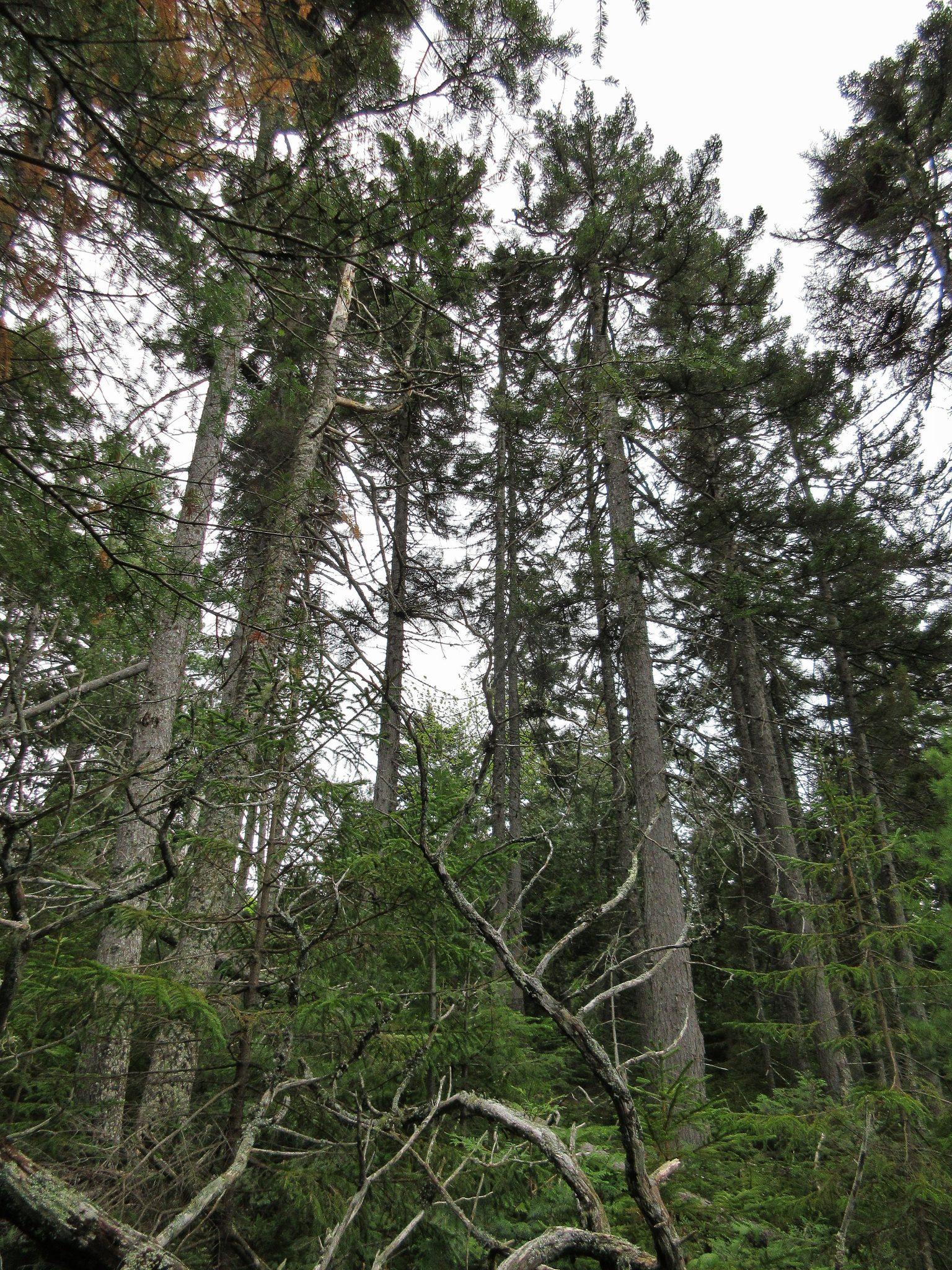
In most of Maine’s forests, trees are cut and removed for human use as fuel, lumber, or raw material for paper and other wood products. In Big Reed Reserve, when a tree is toppled by wind, or chewed by a beaver, or damaged beyond recovery by hungry insects, it lies where it falls. Fungi and bacteria slowly decompose it, releasing carbon and other nutrients that will nourish new beginnings.
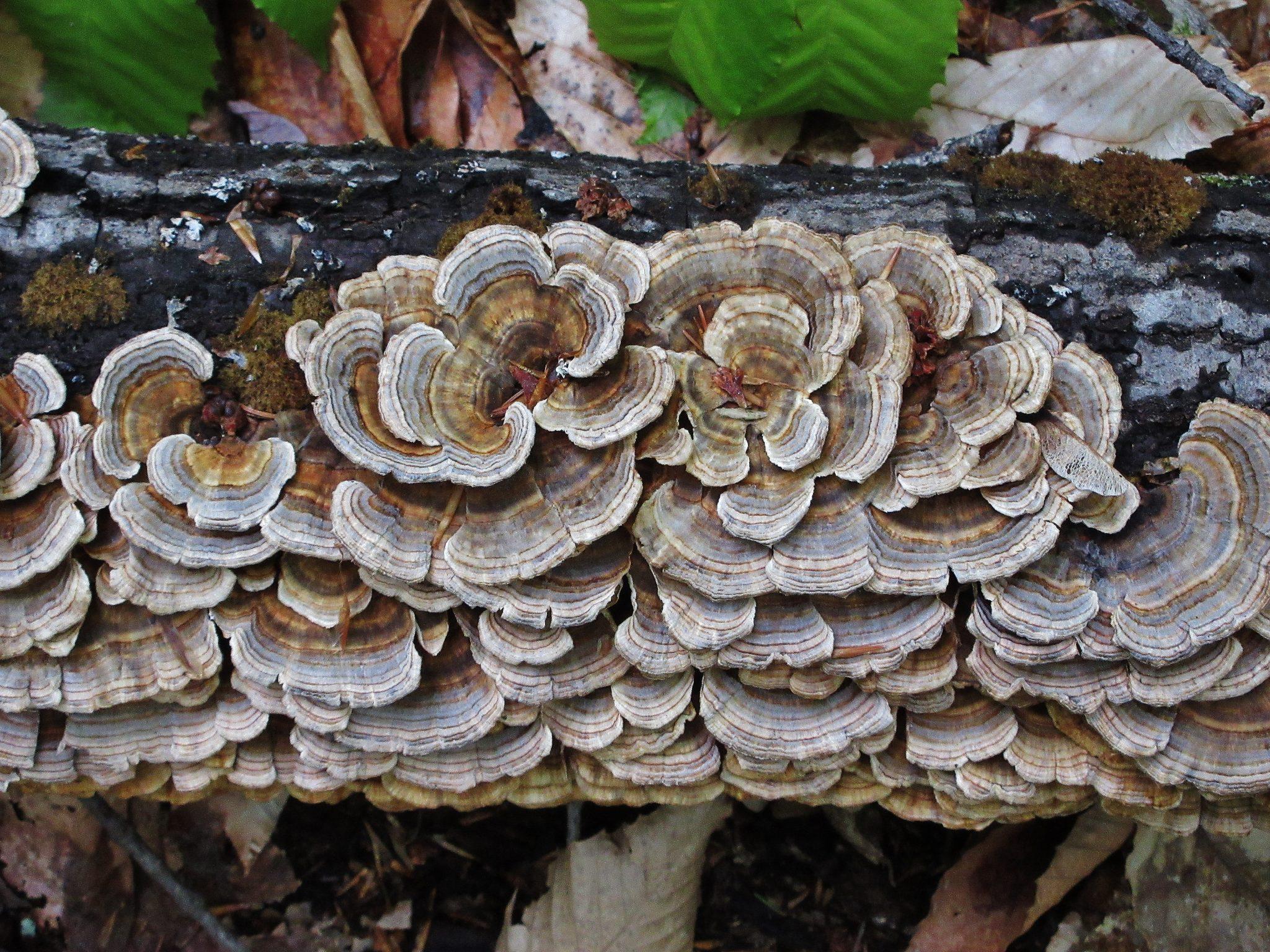
The ground beneath my feet was far more than mere dirt. It was spongy and alive. I was walking over the bodies of trees returning to the soil from which they sprang. From that soil, they reemerge transformed: as moss, flowers, and tiny seedlings with centuries of growth ahead of them.
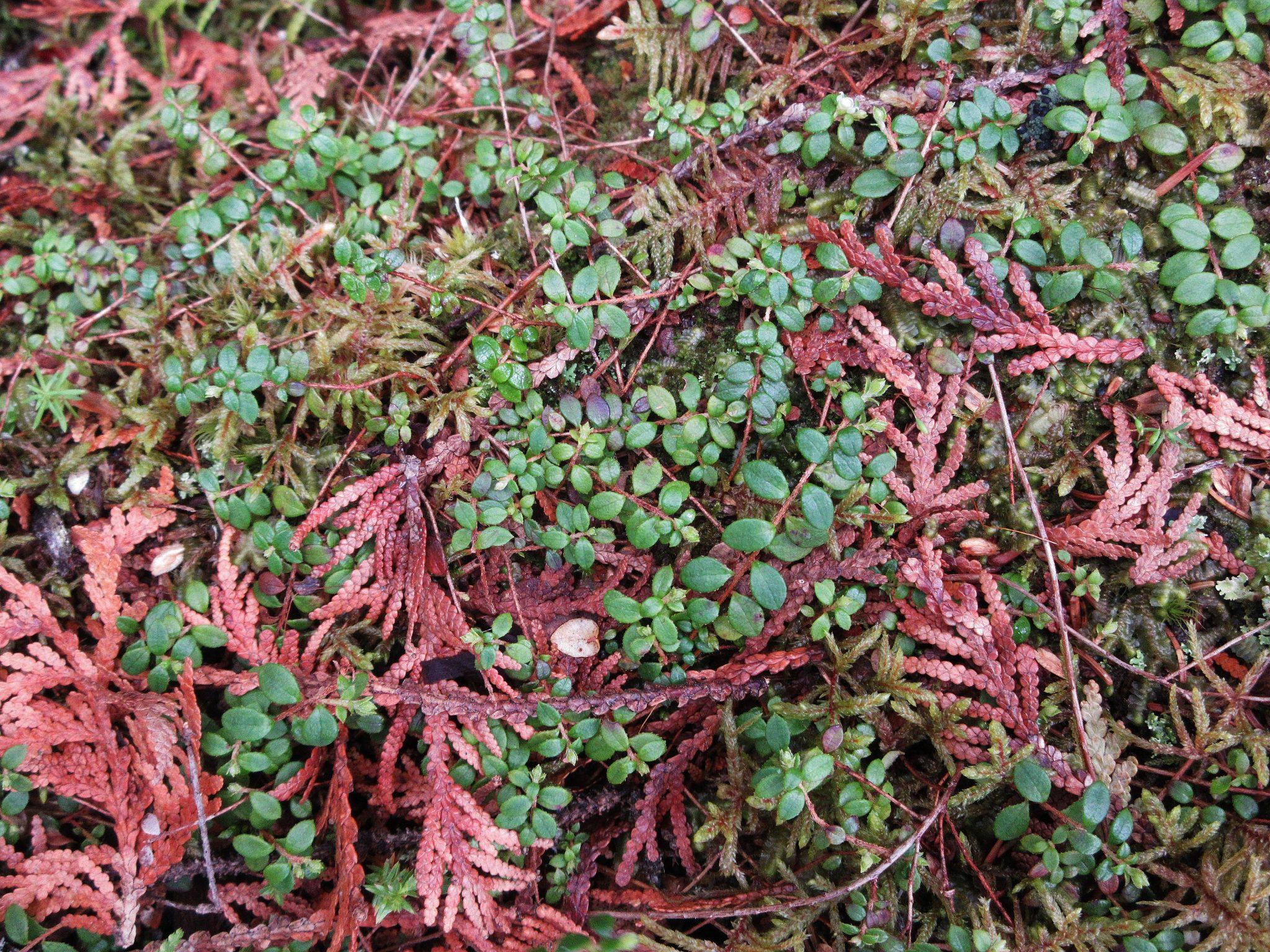
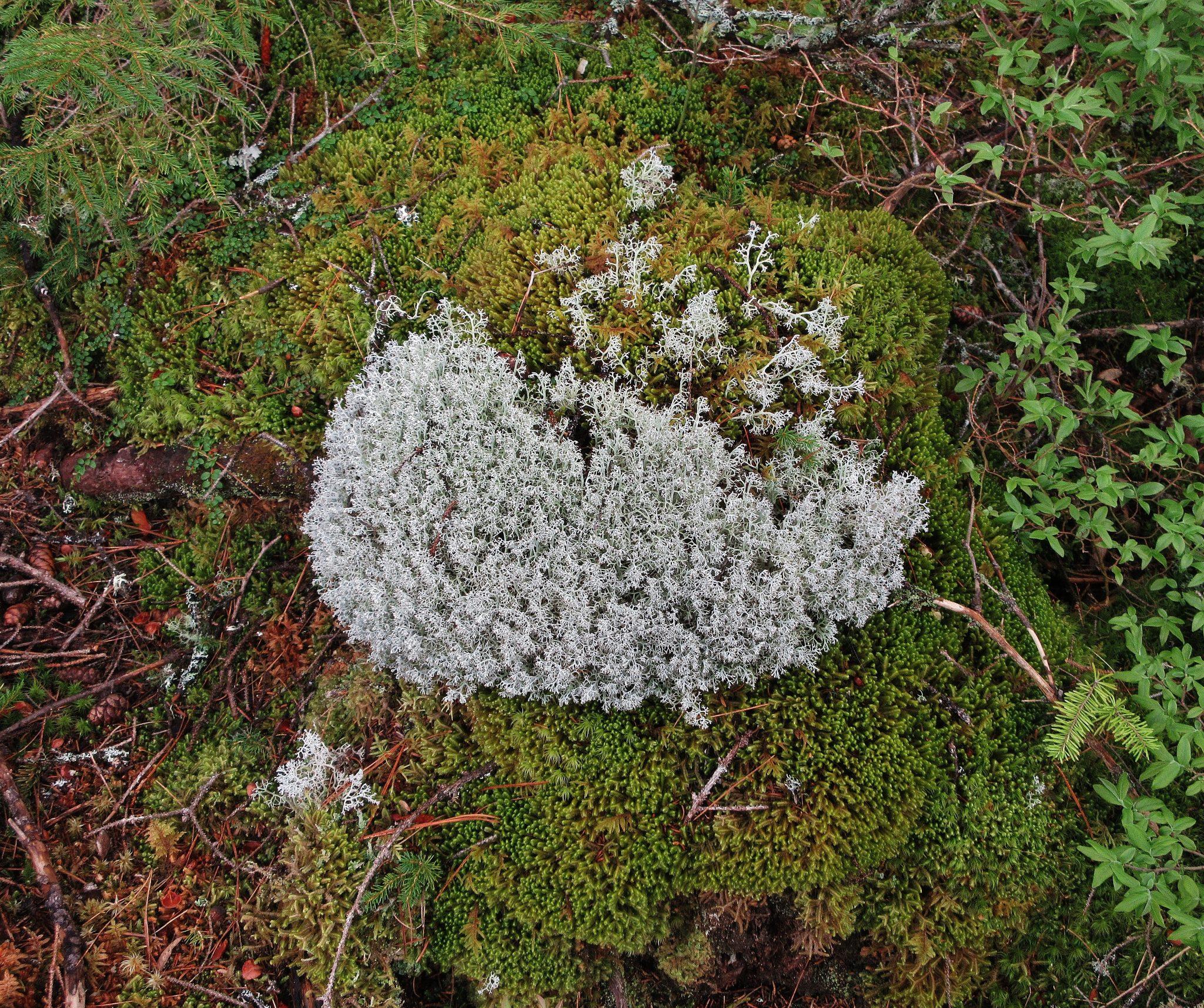
Sometimes the transition from death to rebirth is strikingly direct. At the outlet of Big Reed Pond, I found a “nurse log” – a decaying tree from which the seeds of the next generation germinate and grow.
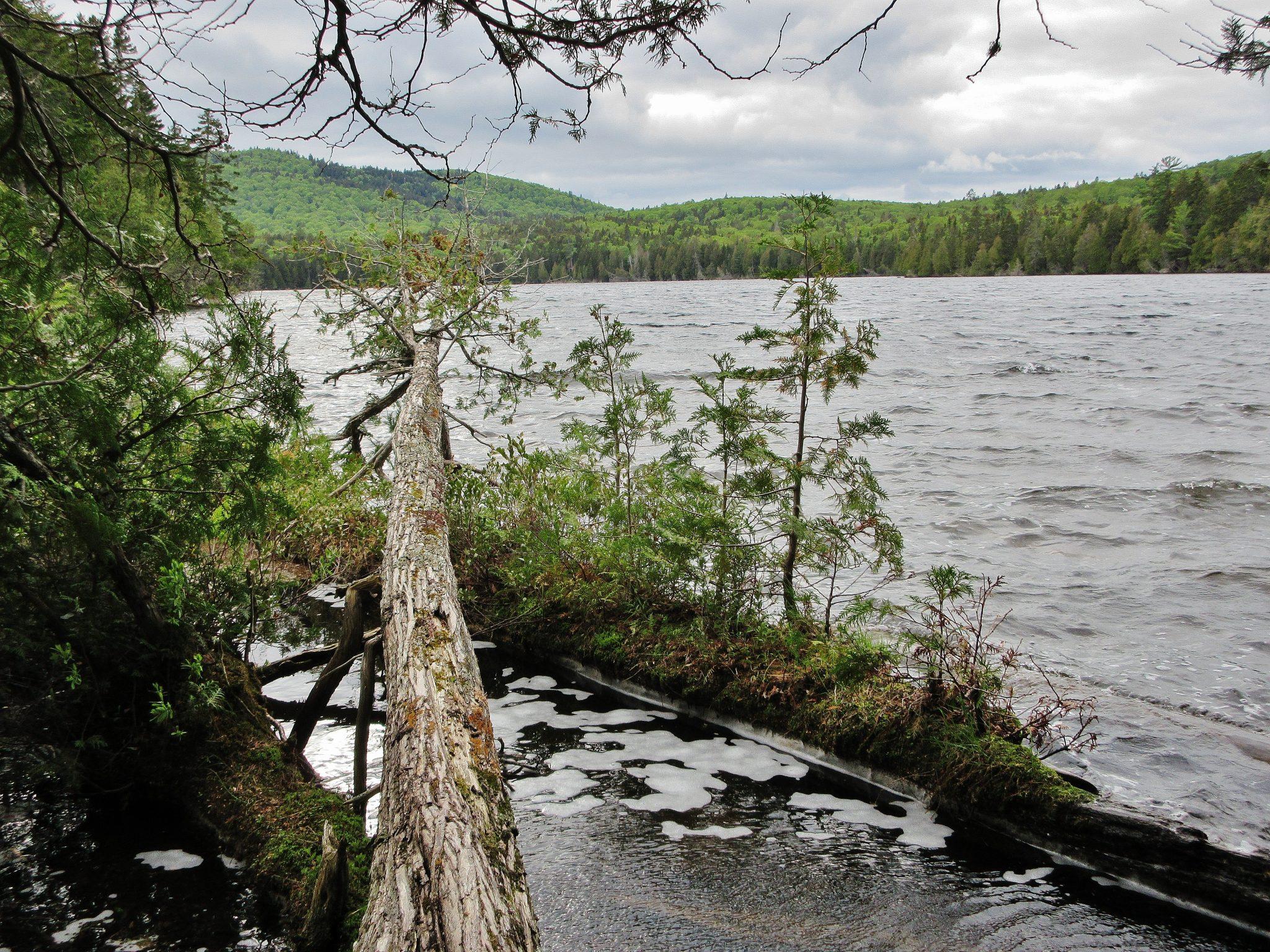
The forest of Big Reed is resilient. Small saplings live in the shade of mature trees. This advance regeneration serves as insurance against events such as windstorms that bring down the giants of the woods. When they fall, sunlight streams through the gaps they leave in the canopy, empowering the waiting saplings to rise and take their place.
The forest’s vitality is impressive. A valiant little striped maple brought a smile to my face. By all rights, its life should have ended when a beaver transected its trunk. But the tree refused to give up. Its branches are literally rising to the challenge.
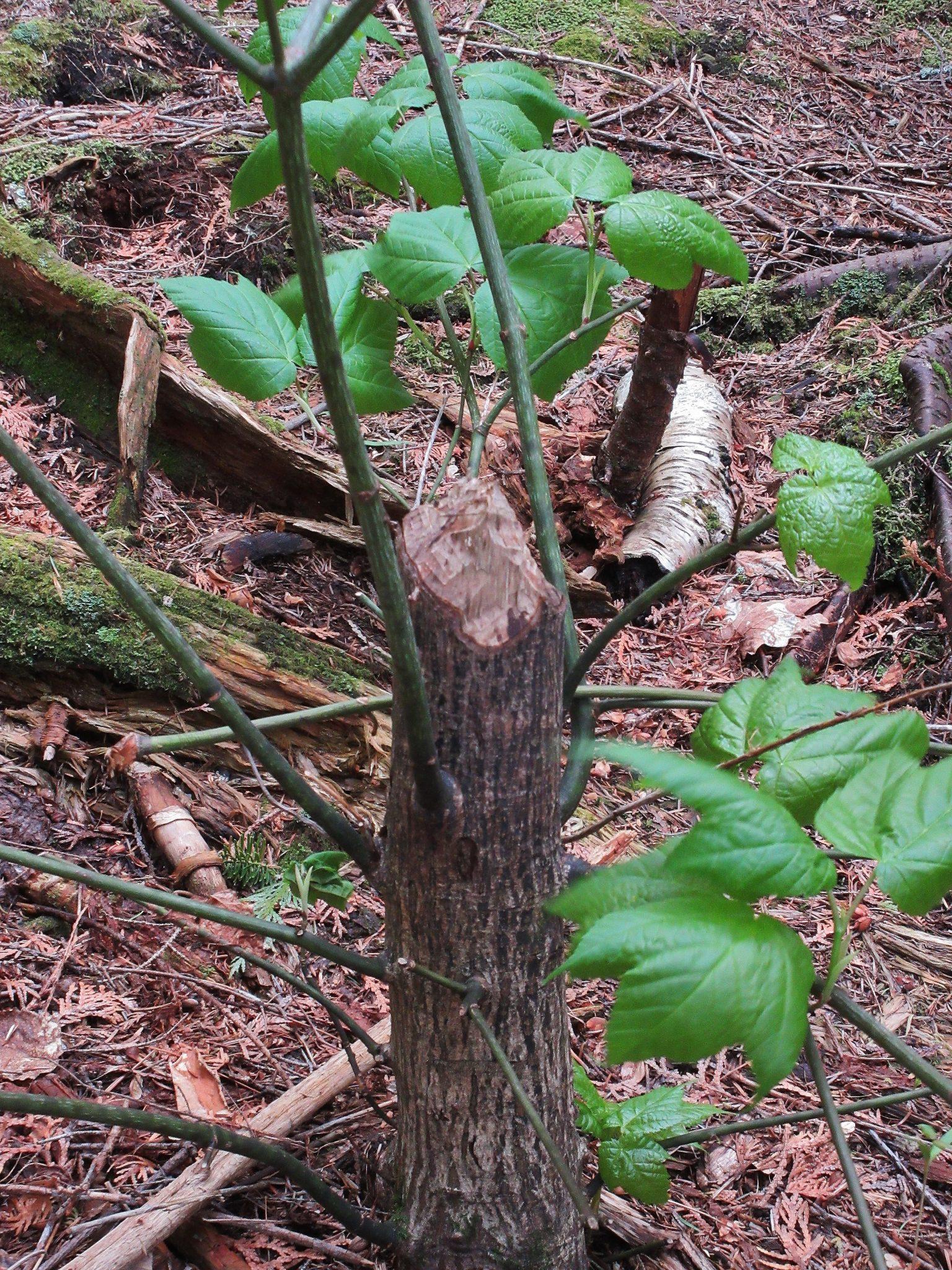
In recent years, we’ve begun to understand that the relationships among trees in a healthy woodland run deeper than we previously guessed. Unseen, beneath the forest floor, lies a hidden communication system. A vast network of tiny fungal filaments connects the roots of each tree to those of its neighbors, creating an arboreal Internet that has been dubbed the “Wood Wide Web.” The trees provide their fungal partners with food, in the form of sugar that they make in their leaves or needles through the process of photosynthesis. In return, the fungi provide the trees with essential minerals such as phosphorus that they draw from the soil. And the array of interconnecting filaments allows the trees to communicate with each other. Research has shown that trees with extra nutrients can send them to other trees that are in need. And trees can send warnings – in the form of chemical signals – about dangers such as attacking insects, so their neighbors can prepare their defenses. When I walk through a forest, I like to think about the mysterious interchange happening below me. At Big Reed, this conversation has continued for thousands of years, uninterrupted by the noise of the human world.
As I explored the forest, I kept my eyes and ears open for signs of the creatures who call it home. Whatever else I may be doing in the woods, I’m always listening for birds. But the temperature remained in the forties, and a stiff breeze blew. Given these conditions, the birds were mostly quiet. A few warblers sang; I identified the vocalizations of a yellow-rumped, a black-throated blue, and an ovenbird. I heard the somewhat monotonous chant of a blue-headed vireo and enjoyed the energetic aria of a winter wren. There were woodpeckers: I heard the call of a yellow-bellied sapsucker and saw the rectangular cavities left by pileateds feasting on carpenter ants in dying or dead trees. I know there were many species whose presence I failed to detect, and I hope to return someday under more favorable birding conditions.
I found signs of three mammals. As my photo of the feisty striped maple shows, I spotted beaver-gnawed trees. And given the number of spruce, it was no surprise to hear the harsh trill of the red squirrel, or to find the messy scatterings of cone scales that show where they have dined. What I hadn’t expected was the prevalence of moose droppings. The rich growth of the understory apparently provides moose with tempting edibles.

Though Big Reed Reserve may appear to be a pristine Maine Woods Eden, the impacts of humans are far-reaching. It’s true that Big Reed’s trees have never been cut with axe or chainsaw. But humans have indirectly felled many of the forest’s large beeches. In the late 1800s, European beech scale insects were brought to Nova Scotia. By the middle of the twentieth century, the bugs made their way to the Maine Woods. As they feed on beech bark, they create cracks through which canker-producing fungi enter. Infection causes premature death. Unfortunately, only a small percentage of beech trees are resistant to the insects.

And as our greenhouse gas emissions warm the climate, the distribution of Big Reed’s tree species will change accordingly. Spruce, one of the major citizens of the current forest, will likely decline. Oak, now absent, may move in.
In my heart, I wish we could protect Big Reed as an Eden truly untouched by humans, an unchanging time capsule of New England’s pre-settlement forests. But there is no corner of our planet so remote that we haven’t altered it in some way.
Still, the pulse of life remains strong in Big Reed Reserve. I have faith that the forest will adapt and continue to thrive. And for that I am grateful.
Here are sources offering further information about Big Reed Forest Reserve:
The Sierra Club Guide to the Ancient Forests of the Northeast. Bruce Kershner and Robert T. Leverett. Sierra Club Books, San Francisco, 2004. [This book is out of print, and I found no inexpensive copies to purchase online. However, I was able to borrow a copy through interlibrary loan.]
“Big Reed Forest Reserve: A Place Out of Time.” Joe Rankin. Northern Woodlands, Autumn 2018. Available at https://northernwoodlands.org/articles/article/big-reed-forest-reserve.


